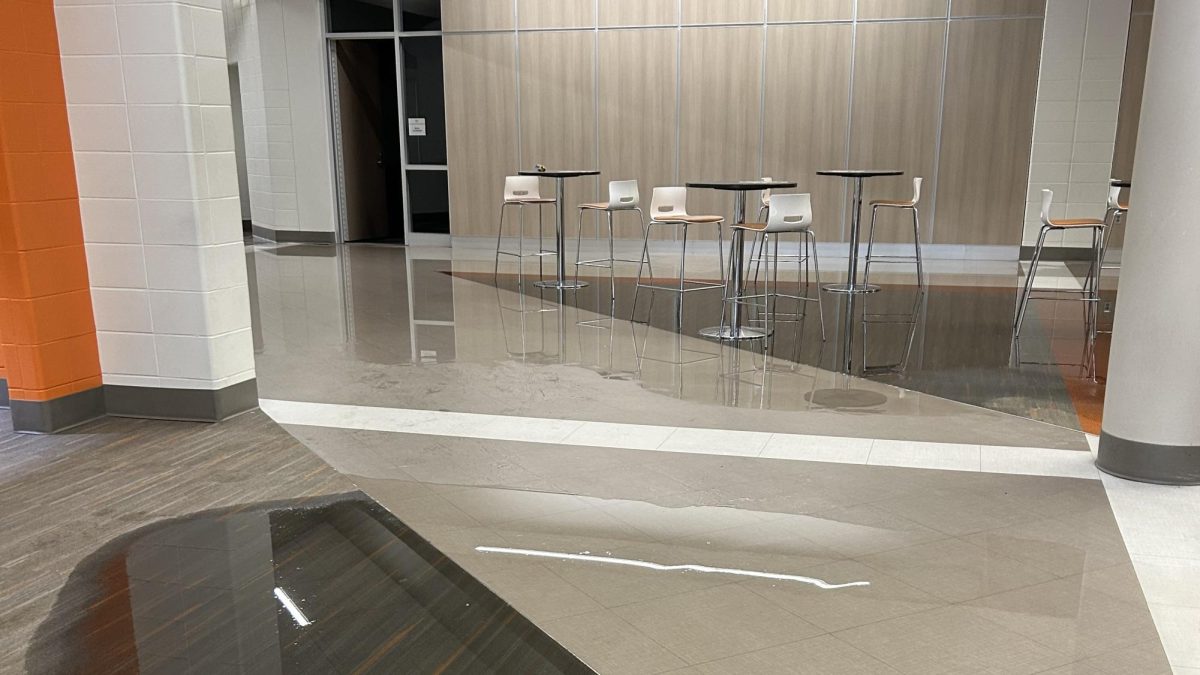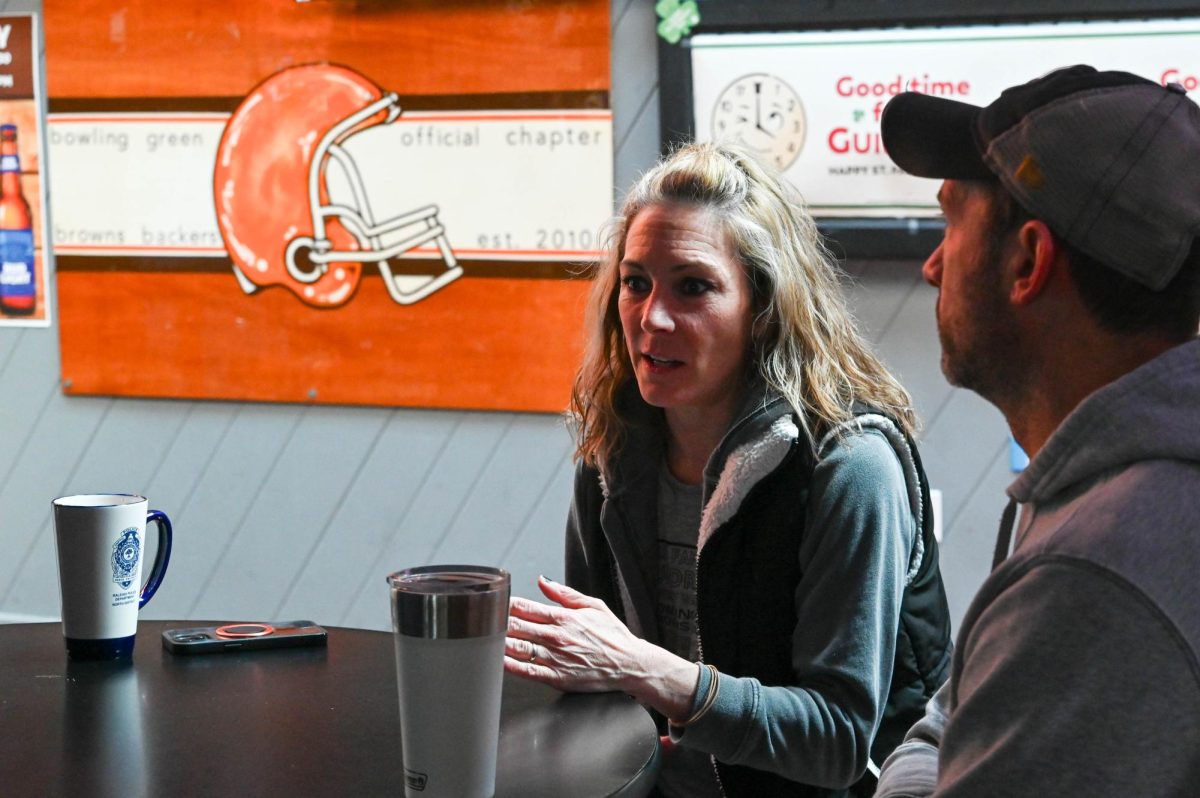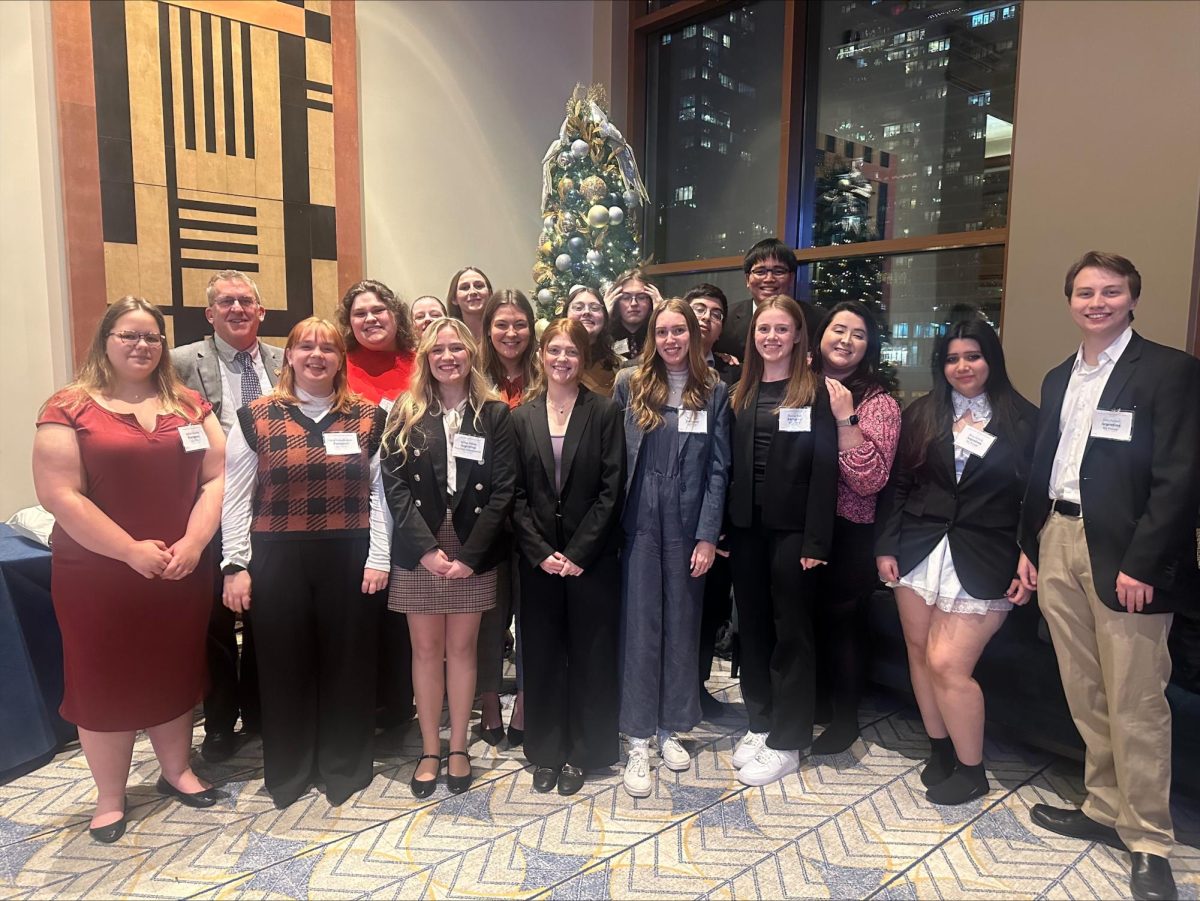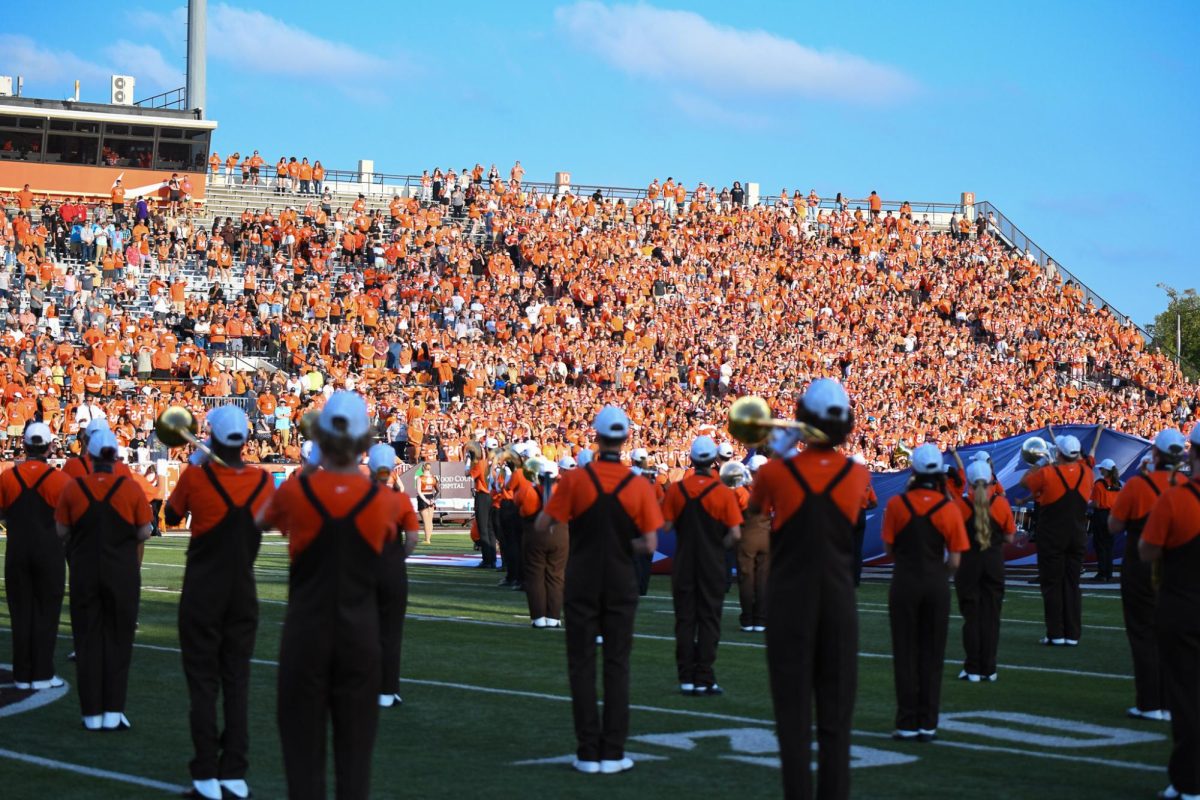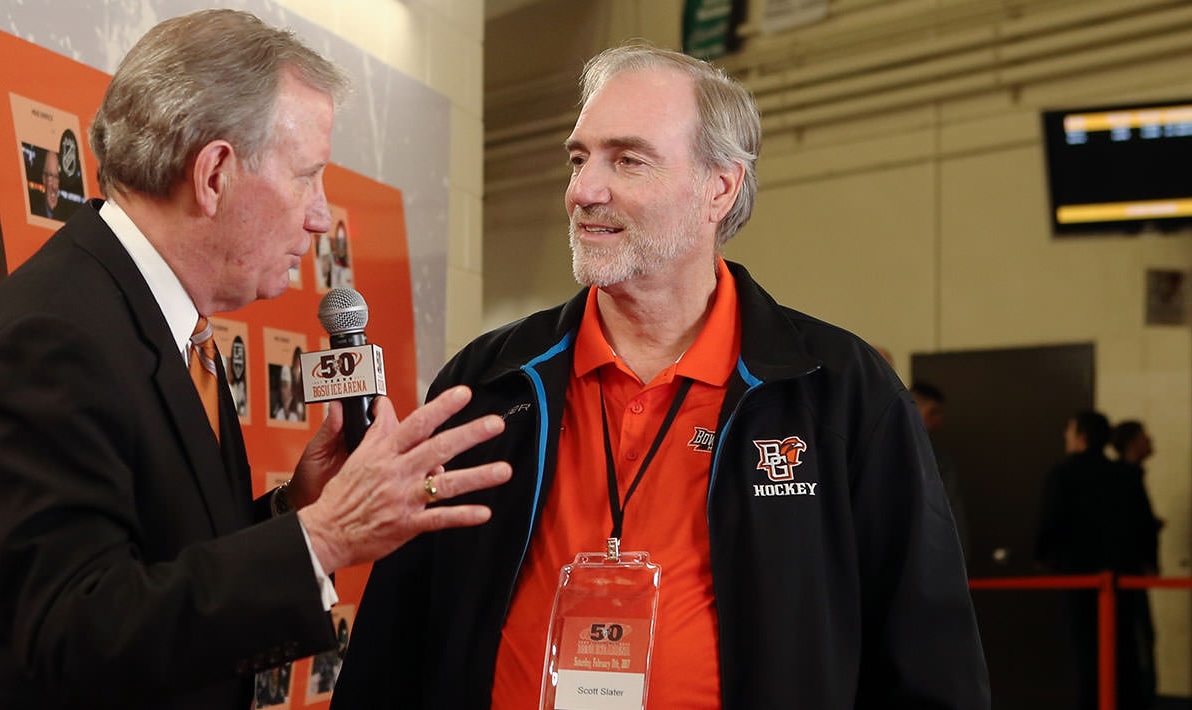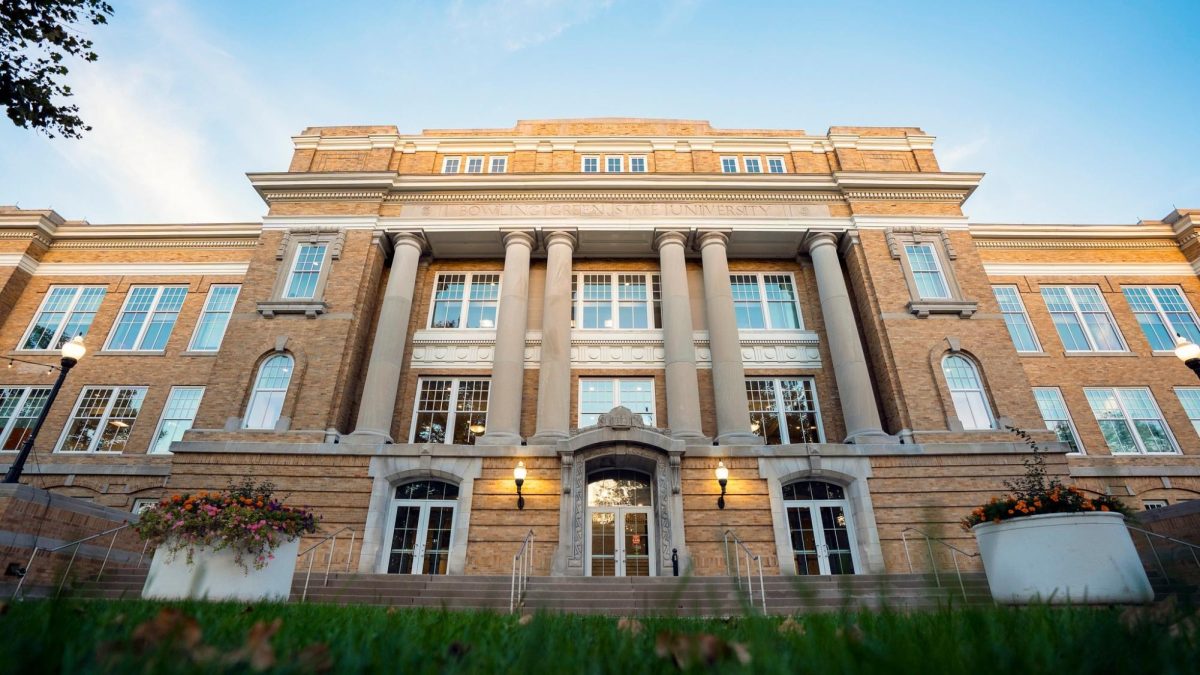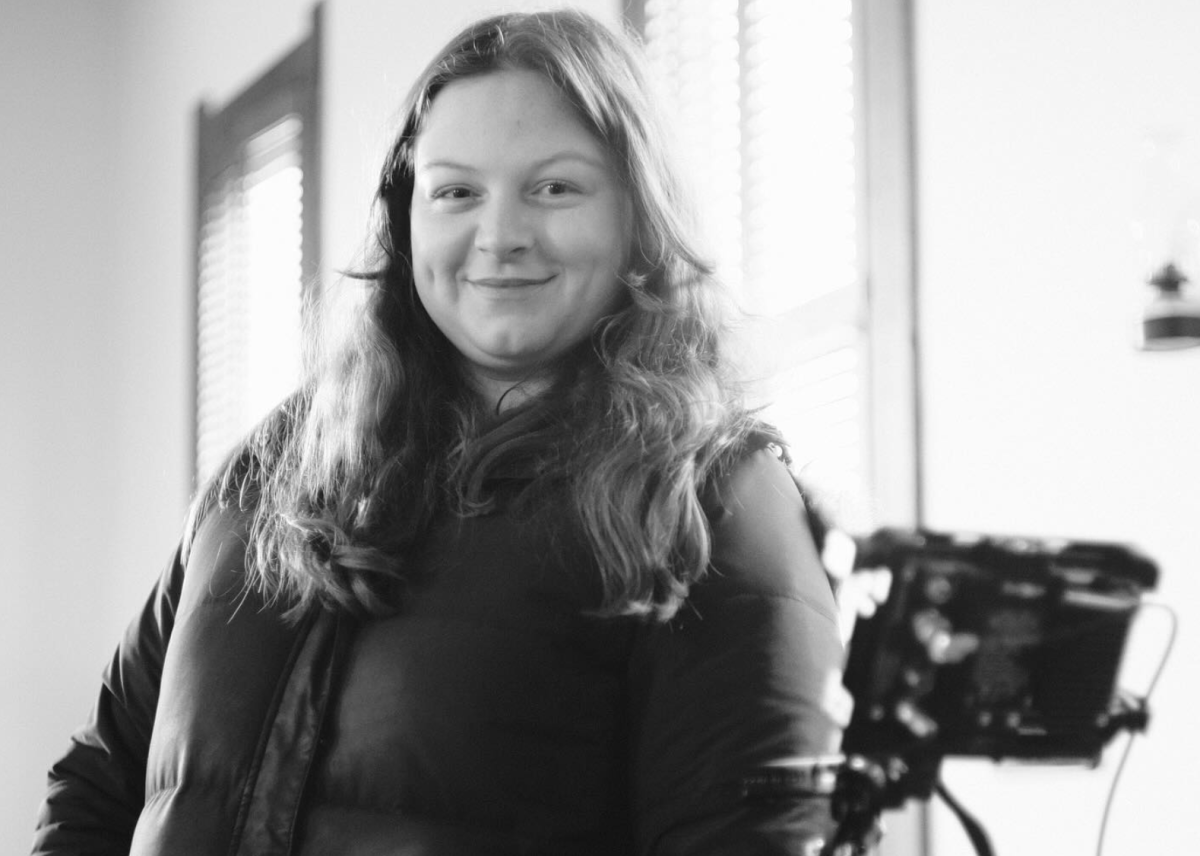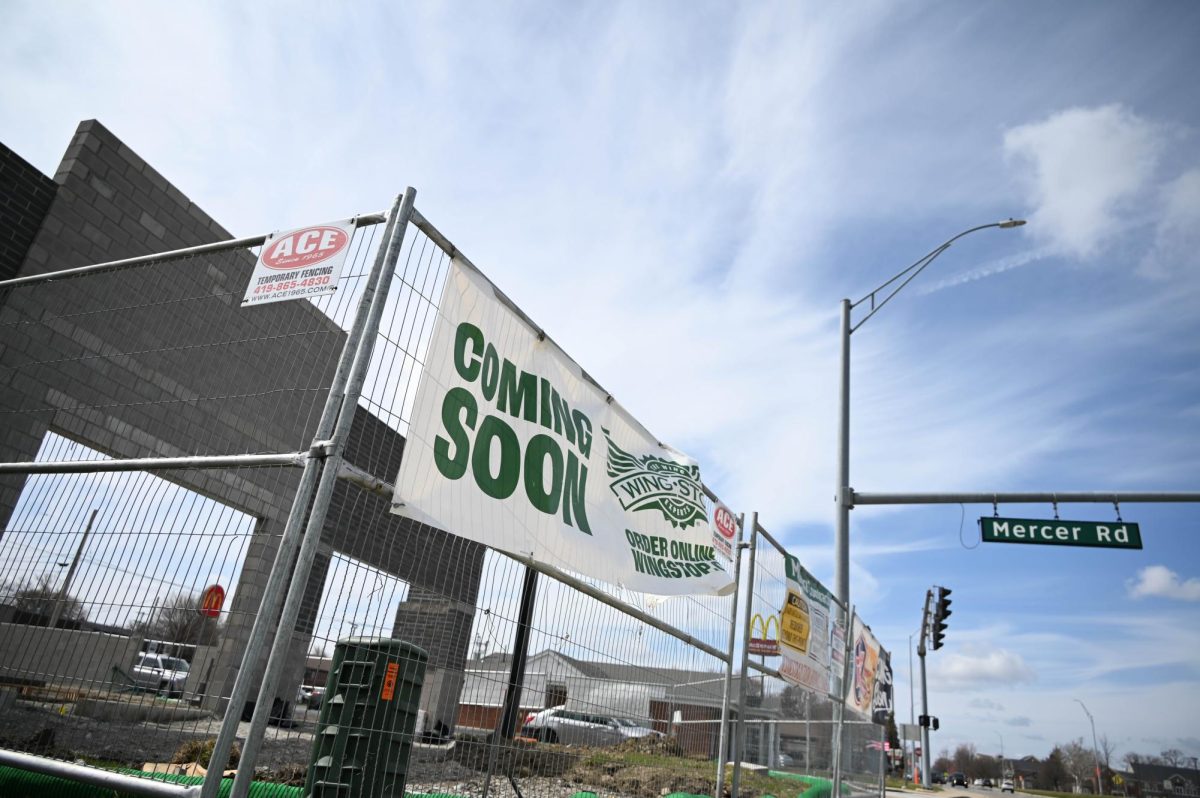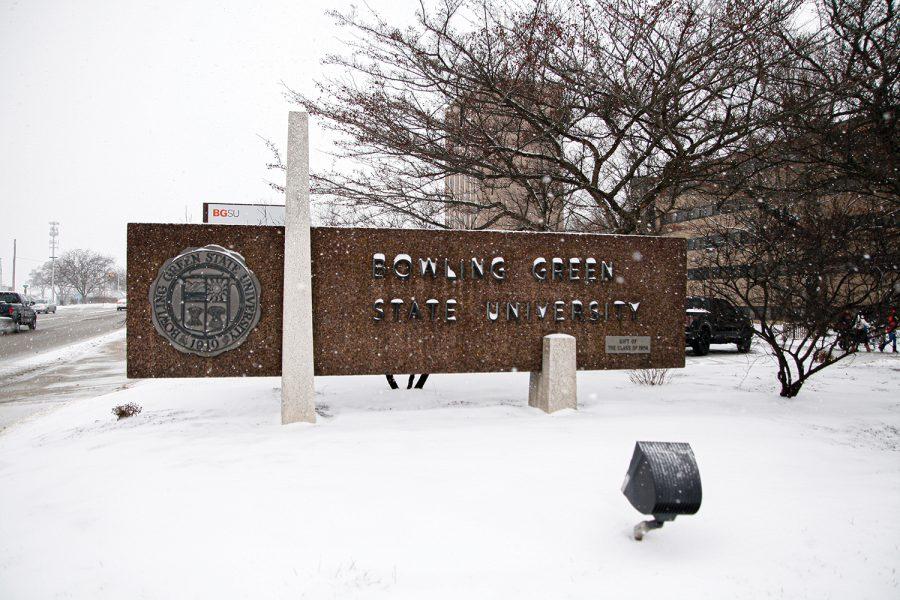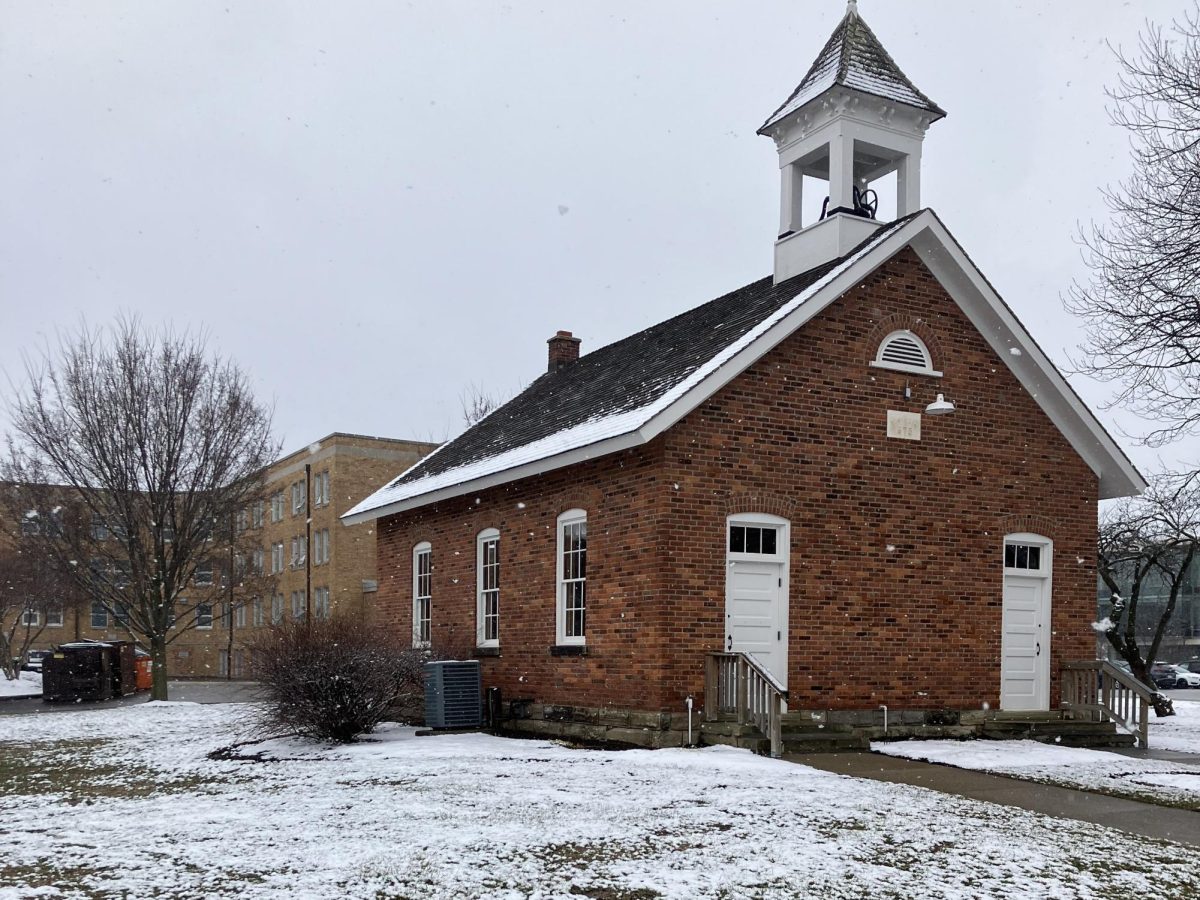Sustainability experts at Bowling Green State University (BGSU) and in the city of Bowling Green say they are concerned about climate emergency preparedness following some events, like water main breaks, that took place last month due to historically low temperatures.
As temperatures in Bowling Green dropped as low as minus 3 degrees on Jan. 22, 19.8 degrees below the average daily low and recorded a wind chill factor below minus 10, according to U.S. Climate Data. Those cold temperatures led to water main breaks and significant flooding in more than one location—a problem city and campus experts say could happen again.
Court and Pike Streets, Olscamp Hall and Founders Hall were all impacted by flooding as a result of water system failures last month, BG Falcon Media previously reported.
“Gallons upon gallons of water were dumped into the street and campus buildings because of the cold,” said Nicholas Hennessy, BGSU’s Sustainability Manager.
The water main breaks also led to reduced water pressure for multiple campus buildings and off-campus housing. Some of the university’s climate and sustainability experts said there is cause for concern as to whether local infrastructure is built to withstand extreme weather like the university experienced last month.
“Some of BGSU’s newer construction, like the Greek Village, is somewhat vulnerable to colder temperatures,” said Hennessy. “Some of the structures are just not used to these types of extremes.”
The extreme weather and its risks aren’t likely to end anytime soon, experts say.
“Each winter that goes by, the weather gets more and more variable,” Assistant Manager of BGSU’s Office of Sustainability Zach Hayes said. “With climate change, you have more extremes, so our heat is getting extremely hot and our cold is getting extremely cold.”
Hennessy said extreme temperatures could become costly for the university and surrounding community. As labor costs could rise if more people, time and resources are needed to clean up after extreme weather events. The damages could also take a financial toll on students, locals and businesses in the form of taxes and utility bills.
“Even if we’re in kind of a moderate climate here in the Great Lakes region, we’re still going to see the effects of climate change, whether it’s increased heating and cooling costs or taxpayer money having to go to infrastructure upgrades,” said Hayes. “It affects everyone’s quality of life.”
More extreme weather caused by climate change is also causing insurance rates to rise, making it more difficult for the average person to afford to protect their properties, belongings and families, according to Hennessy.
“It’s having an impact on where people can and will live,” said Hennessy.
The cold temperatures also raised questions about whether BGSU students are equipped to handle the increasing frequency of extreme weather.
Hennessy and Hayes said many BGSU students, including several international students, said they were unprepared to brave the extreme cold and may not own a coat at all.
“We got several inquiries about the availability of winter weather gear in the Campus ReStore,” said Hennessy. “Seeing students out in the extreme cold without hats, gloves, ear coverings, sufficient shoes or maybe even wearing shorts because they are not accustomed to dealing with it is not a good situation and can create health issues.”
Hennessy said additional planning is needed to deal with extreme weather and its impacts, as people generally, “don’t like to deal with broken water mains, flooding in buildings and failed temperature systems on a regular basis.”
The city of Bowling Green is taking steps to address a changing climate through its recently completed 2024 Climate Action and Resiliency Improvement Plan, which details areas of improvement for city works including its energy and power supply, water management and waste diversion.
The concept of “climate resilience,” which refers to a community being prepared for disasters and climate extremes, is also a major part of the city’s plan.
BGSU also has its own climate action plan, which aims to lower the university’s contribution to the problem of climate change.
“We need to be mindful of our own impact on things like this,” Hennessy said. “We are cognizant of what our carbon footprint is, we know what contributes to it and what would help reduce it.”
Hennessy and Hayes both stressed the importance of Bowling Green community members making their voices heard about the impacts of climate change by contacting their elected officials.
“If you are concerned about it – and you should be – there’s somebody who is going to hear your legit concerns as a voter and U.S. citizen,” Hennessy said. “The time is now.”
Hennessy said it’s important for students to remember that their individual impact is significant.
“If we want to preserve our chance of a good future for us and for our children, we have to put in the work and avoid being passive about it,” said Hayes. “The hope has to be alive.”


